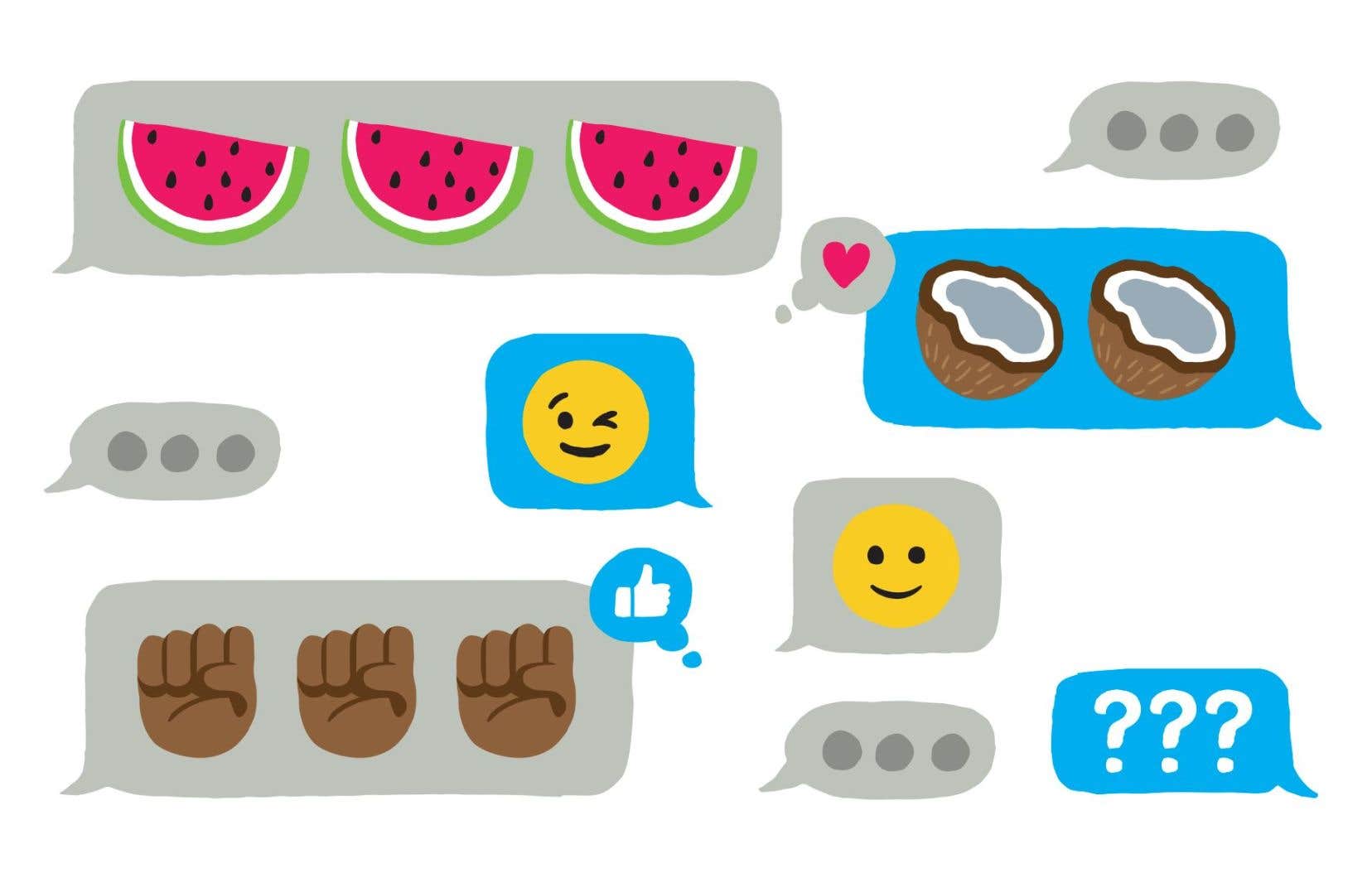Watermelon and coconut give off a political scent on the Internet. One evokes support for the Palestinian cause, the other for Kamala Harris’ presidential campaign. Raised fist, flag, wink… Have emojis become essential in today’s struggles?
The Palestinian flag is present in the keyboard of our phones, but it is another image that relays the struggle of this people in the virtual world: the watermelon. Like a cryptic symbol, shorter than a slogan and more sympathetic than a flag, the fruit that reveals when cut the same colors as the Palestinian standard has spread across online accounts supporting the cause.
The last of these politically-flavored emojis: the coconut. The image has gone viral on the web in recent weeks as a representation of Kamala Harris’ campaign. The brown ball with a white heart refers to a video where the aspiring president says, hilariously, that no one “falls out of a coconut tree.” This excerpt from a speech in which she stressed the importance of positive leaders in educating young people hit home on social media, and the metaphor was taken up by her supporters. Didn’t she herself fall into the presidential race thanks to a combination of circumstances? Displaying a coconut immediately became the code of a political movement.
These emojis would therefore summarize an entire social group in a single character. “We suspect this, but we don’t have any research on that,” specifies Isabelle Boutet, a researcher at the University of Ottawa, who has written several scientific articles on the power of these emojis.
Double meaning, double edged
The political double meaning of these seemingly benign pictograms is not translated in the same way everywhere. Nor is it understood at first glance.
The watermelon slice, for example, was the emblem of the Ukrainian army’s counteroffensive in the south of the country (where the fruit grows) before being brought back to the forefront by pro-Palestinian activists, who were using this symbol even before the arrival of the Internet. The black fist is still the symbol of the Black Lives Matter movement, an obvious allusion to the African-American demonstrations. More abstrusely, the far right has appropriated the “OK” sign with rounded fingers to represent it. Oddly enough, flag icons are recognized as being the least used among the 3,782 existing emojis, as if their meaning were too obvious.
Beware of confusing interpretations even in private conversations. The thumbs-up sign represents a valid contract signature, a Saskatchewan judge ruled last year. The gun sign has been interpreted in France as a death threat. In Florida, the eggplant and peach have been legally considered a form of sexual harassment.
Unicode, the international organization responsible for approving new emojis, acknowledges on its blog that these symbols are not “universal.” However, “they retain their meaning within the same cultural area. For example, the thumbs up is a positive sign in Euro-American culture, but can be offensive in Iran or other Middle Eastern countries,” according to this transnational organization. Being “accessible in large and broad cultural areas” is therefore the first criterion for accepting new symbols, the number of which increases year after year.
A smiley face to make yourself understood
If icons and other little yellow heads have become so essential, it’s because they are our faces online, says Isabelle Boutet. “Humans are used to expressing themselves in a subtle way. Emojis play a role very similar to tone of voice, facial expression, gestures. They clarify intentions.” At Unicode, we took care to add skin tones, different genders and all sorts of other nuances that serve to communicate our identity beyond words.
These signs translate our personality and our belonging to a group in the same way as adding our pronouns in our email signature or insisting on changing the skin color of our thumbs up. The person who often uses the smiley face will be seen as warmer, while the angry face will project a more dominant image, studies on the issue show. In a professional context, these nuances can become inappropriate, recognizes Isabelle Boutet. “In certain groups, it can be problematic. It’s not because it’s easy to add that it doesn’t have the same functional and social impact. It has the same impact as a facial expression.”
The emoji revolution, which began at the turn of the 2000s, has nevertheless helped to solve some old communication problems. For example, humans have long sought ways to express irony or sarcasm through text. European authors had tried to impose it in the 19th centurye century an irony point in the form of an inverted question mark. The problem is that no one understood the meaning of the scribble. Linguistic studies demonstrate one after another that the winking emoji or the one with the tongue stuck out placed after an ambiguous sentence are the best for intuitively understanding sarcasm. Conversely, some emojis are confusing. A negative message to which we attach a smile to signify irony, as Isabelle Boutet points out, “doesn’t go down well.”
Which just goes to show that, as telling as it may seem, an emoji is not worth a thousand words.
